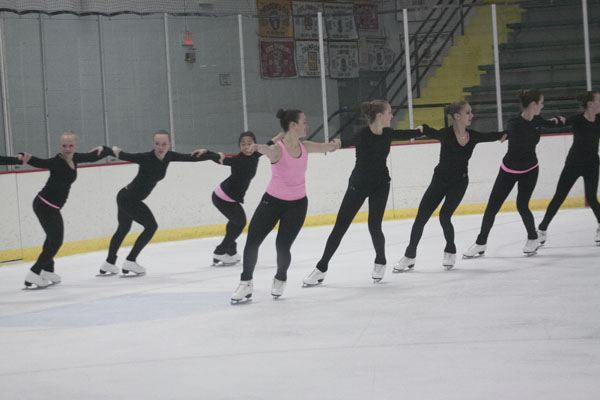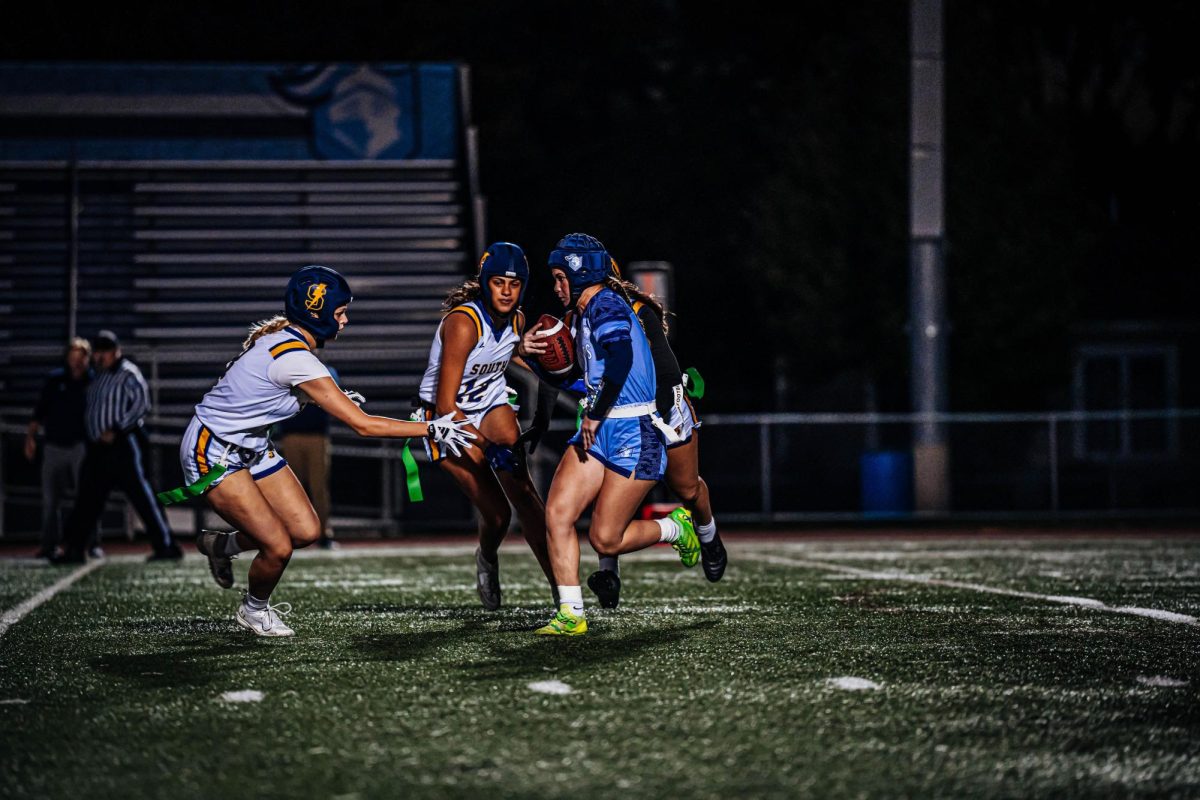It’s that time of the year again when the ice melts and the world thaws into spring. Although friends and family might be finished with awkwardly skating around Millennium Park during the holiday season, some South students still attend long practices to perfect programs in which they skate synchronized on a team of 18 girls, ages 13-18.
Although she began skating individually at age four, junior Alexis Brill joined Chicago Jazz, an organization of synchronized skating teams, in seventh grade. She now skates on the junior team, the highest level the organization offers.
“I joined synchronized skating because I felt that it was a better fit for me,” Brill said. “I like being part of a team […] and now I’m at the hardest level [in Chicago Jazz] and I love it.”
According to Brill, the junior team practices three to four times a week, with five hour practices on the weekends and three hour practices on weekdays. Brill says that her teammates motivate her to push through extensive practices.
“We all have each other’s backs […] it can be really tiring but we’re all going through it together,” Brill said.
All the practices lead up to the competitions the junior team attends each year; they compete at either five or six competitions depending on how well they do during the season. Freshman Melissa Trujillo, who is also on the team, recognizes the quick pace at which they prepare for competitions.
“The [week before a competition,] our coach makes us do our programs over and over again, barely letting us have a water break,” Trujillo said. “But it’s worth it.”
The team has competed in multiple competitions outside of the country, including its first international competition to Switzerland two years ago.
According to Brill, a favorite memory from her synchronized skating career was winning her first gold medal with the team in Switzerland against 12 other teams.
Although the team puts long hours into getting comfortable with and perfecting their skating routine to prepare for these competitions, that doesn’t mean they don’t get nervous.
Freshman Amanda Angulo, who trains with the junior team but doesn’t attend competitions, said that the team has a ritual way to get rid of nerves before performing.
“In the locker room right before we compete, we all get into a really big circle and to get rid of our nerves we all scream as loud as we can,” Angulo said.
However, getting rid of nerves does not guarantee a perfect skate as a team. Plus, there sometimes are injuries.
“It’s very scary because you’re so close to all the other skaters all the time and we have blades on our feet that are very sharp,” Brill said. “I’ve been kicked pretty badly and I have scars all over my legs because of it. But that’s not the worst that can happen; it’s just a little blood.”
Despite injuries and time-consuming practices, Brill couldn’t imagine her life without skating.
“[It’s hard to put so much time into skating,] but then I remember moments like when I won in Switzerland or other times when I have a really great practice and I think that I could never live without skating because it’s just who I am,” Brill said.















